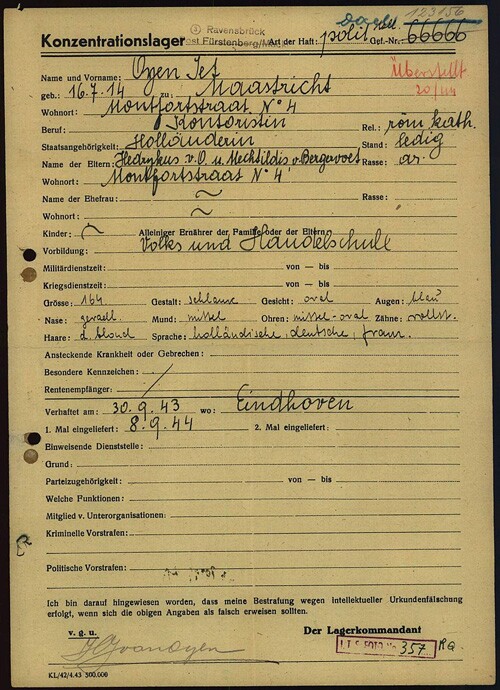Several years ago, Todd Knowles, Deputy Chief Genealogical Officer at FamilySearch, visited the synagogue in his ancestral hometown of Fordon, Poland, where he became friends with the local Rabbi. Todd’s ancestors had immigrated and become citizens of the United States during the mid-1800s—long before World War II. Nevertheless, by searching records in the Arolsen Archives of Jews captured during World War II, he found that he and the Rabbi had mutual Jewish relatives who were captured during World War II. The Arolsen Archives is a great resource to help you find your Jewish ancestors who were affected by the events of World War II.
What Is the Arolsen Archives?
The Arolsen Archives, once known as the International Tracing Service, is the world’s most comprehensive archive on victims and surviving captives of the Nazi regime in Germany. While the conditions the records represent are distressing, they are thorough. Documents include systematic recording of significant data for about 17½ million Jewish people of all ages. These can provide important details for genealogical research. Registrations include information about some people who cannot be found in records elsewhere. (The Arolsen Archives web page is based on German. Click on the language button at the top right corner of the page for translations into English, French, Polish, Spanish, or Russian.)

The collection in the Arolsen Archives is part of the ENESCO Memory of the World Project.* The central tasks of the Arolsen Archives have been to clarify the fates of prisoners and look for missing persons. Each year the archives staff answers inquiries for about 20,000 victims.
#Everynamecounts is a crowdsourcing initiative of the Arolsen Archives to build a digital memorial to the victims of Nazi persecution so that the names and identities of these people will not be forgotten by future generations.

How Were the Records Preserved?
The records for people interred in the concentration camps were discovered after World War II and placed in the custody of the Red Cross, a politically neutral, world-wide, independent body. To assure widespread preservation, the organization turned over 1 full copy of all the records to each of the Allied nations with the understanding that the records would not be released publicly until all nations agreed to do so. Some of the originals are kept in the Arolsen Archives in Bad Arolsen, in northern Germany. Arolsen also holds copies of the original records that are stored in other archives.
About 10 years ago, the way opened for the records to be made public. The process of digitizing and placing the images online began. When Ancestry began to help, the process was hastened. So far, they have digitized about 30 million documents with 10 million remaining to process.
The other Allied countries have preserved their records. In the United States, the records are held in the Holocaust Museum at the Smithsonian Institution in Washington D.C. While the list of records in the Smithsonian is searchable online and records can be requested, the actual images are being made available on the Arolsen Archives website.
What Can Be Found in the Arolsen Archive Records, and How?
The records in the Arolsen Archives include alphabetized lists of people and their dates of birth, maiden names of married women, place of residence before arrest, where they were interred, dates and places of death, and more.
To access record images in the Arolsen Archives:
- Visit the Arolsen Archives web page.
- Click on the Online Archive link partway down the first page.

- Read the short “Terms of Use” agreement, and click Agree.
- Enter search terms by topic, place, or name into the resulting search box on the left side of the screen to reveal the index of pertinent records. Click Search.

- Click on the person or topic of interest to see explanations, and the document images appear on the right side of the screen. Clicking on the document enlarges and centers it. Links are also provided to access other pertinent information.
Keep in mind that not all the documents in the archives are yet accessible online. If you can’t find the person you are looking for, keep checking back as more and more records are indexed online.
The website also provides mapped locations of various compounds, documents regarding their functions, and other topics. Be sure to check out all that the Arolsen Archives has to offer as you search for your Jewish ancestors.
Those seeking information about European Jewish ancestry captured during World War II should check the Arolsen Archives website. It may hold information needed to make connections.
* Footnote: UNESCO, the United Nations Educational, Scientific, and Cultural Organization, is a specialized arm of the United Nations to promote international cooperation in education, arts, sciences, and culture.


